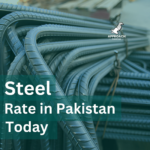Sand Price in Pakistan: Latest 2024 Rates [Market Guide]
In Pakistan, the price of sand is a topic that many people find important, especially those involved in construction. Having worked on several projects myself, I know that sand is a crucial component and key material in building exposition. The average cost of sand can be around 3,000 PKR per cubic meter, but this can vary based on the quality and location from where it is sourced. Sand is often collected from rivers, deserts, and even canals, each providing different qualities of sand that affect its use as a constituent in construction.
In ancient times, alternatives like mud were more common, but today, sand’s role is indispensable. The market for sand is influenced by the high demand, and prices can fluctuate depending on the need for specific qualities and the distance from the source to the construction site. It’s essential to consider the correct measuring units, whether in cubic feet or meters, when making any purchases to ensure you get the right amount for your project.
Sand Rate in Pakistan December 2024 | Rait price in Pakistan
Cement Rate Calculator: Estimate Your Construction Material Costs
When planning construction projects in Pakistan, accurate estimation of sand requirements and costs is essential. Our sand calculator helps you determine the precise quantity and cost of sand needed for your specific project. Important points to consider while using this calculator:
- All calculations are based on standard construction practices and sand usage ratios in Pakistan
- ⚠️ Please refer to the price table above and enter the current sand rate for your region in the calculator input field for accurate cost estimation
- The calculator factors in typical wastage during transportation and usage
- Results show sand requirements for various construction elements (foundation, plastering, concrete mixing)
- Calculations consider project scale and provide detailed material breakdowns
Sand Calculator
* Standard ratios and information:
- Plastering mix ratio - 1:4 (cement:sand)
- Block work mix ratio - 1:6
- Concrete mix ratio - 1:2:4 (cement:sand:crush)
- Calculations include 10% wastage
- One truck = 400 cubic feet
- Prices exclude transportation
Top sand brands in pakistan
In Pakistan, the prices of sand can vary significantly depending on the brands and the company selling them. As someone who has worked in construction, I know how important it is to choose the right type of sand for a project. Knowing which brands are leading in the market is crucial, as the quality and cost can differ greatly. People often have their preferences, and some tend to like certain brands over others. Currently, the top brands are highly sought after due to their consistent quality and reliability. When selecting sand, it’s beneficial to consider the following factors: brand reputation, price, and intended use. the following are the top sand brands in Pakistan:
- Sand Lawrencepur,
- Sand Ghazi,
- Sand Chenab,
- Sand Ravis,
- Sand Ghassu (Slit Sand)
Types of sand in pakistan
In Pakistan, knowing the different types of sand is vital for any construction project. Over the ages, sand has been sourced from the beach, river, and desert, each offering unique traits. For example, river sand is favored for its smooth texture and ability to enhance concrete strength by filling gaps in the coarse aggregate. The binding ability and granule shape are key factors influencing its application. Sand is often categorised by origin, such as desert sand with its fine grains, and sea sand, known for its distinct colour. Additionally, machine-made sand offers consistent quality. When choosing sand, it’s crucial to decide on the most suitable type for your project, considering grain size and proportion to meet specific needs. Each type serves a different purpose, making sand an indispensable raw material in construction.
- River Sand
- Concrete Sand
- Pit Sand
- Mason Sand
- Fill Sand
- Sea Sand (Beach Sand)
- Artificial Sand (M-Sand)
- Utility sand
.
Measuring Unit
In Pakistan, understanding how sand is measured is essential when determining its price. Sand is typically measured in cubic feet or cubic meters, which are the standard units used to indicate the volume you will receive from the market. It’s important to note that the measuring unit might not be fixed and can vary depending on your area. To avoid confusion, it’s crucial to clarify the unit before purchasing. This step is usually necessary to ensure you get the right amount of sand for your needs. By doing so, you can make sure that your transaction aligns with the local standards and avoid any misunderstandings.
Uses of sand in construction
In construction, sand is a key building material with a wide variety of uses. It serves as one of the basic elements in making concrete, providing the necessary mass and stability. The chemical compositions of sand, primarily silica, make it a common material in construction. Sand is often derived from minerals like quartz, limestone, and gypsum, which contribute to its effectiveness in different projects. It is commonly used to create mortar, enhance cement strength, and form asphalt for roads. Despite sometimes containing boulders and other impurities, which can make it less durable, sand remains a critical ingredient for building strong, functional structures like walls and other essential parts of infrastructure. Its role in providing stability makes it indispensable for ensuring the longevity and safety of buildings.
Regional prices variations
In Pakistan, understanding why sand rates vary across different regions is important for anyone looking to purchase sand. Price variations are a common practice, especially in distant areas. Here are some of the main reasons:
- Shipping expenses: As sand travels from the factory to your local shop, the distance increases the cost, making sand and sand cement more expensive in places far from production plants.
- Supply choices: If there are only a few sand shops in a region, this leads to less competition and higher pricing. Conversely, having more options to buy can result in more competitive prices.
- Retailer markups: As sand moves to far areas, it passes through multiple dealers, each adding their own margin, which raises the price for the final customer.
Levies and administrative policies: Different regions may have varying sales tax rates or changes in energy costs, impacting the final cost of sand.
Advantages of sand
Sand is a cost-effective material that plays a vital role in many construction projects across Pakistan. It is a crucial component in making concrete and asphalt, serving as an ideal base material for roads and buildings. Here are some of the key benefits of using sand:
- Exceptional Versatility: Sand can be used in different industries for various applications, such as a bedding material for pipes and electrical cables.
- Durability and Excellent Drainage Properties: Ideal for landscaping projects, sand helps to prevent soil erosion and improve water retention.
- Attractive Option: Widely available and easily recycled, sand reduces landfill waste.
- Composition and Strength: Made of small rock particles, minerals, and shells, shaped by natural forces like wind and water, sand is strong and adaptable, making it a reliable choice for large amounts of material needed over long periods of time.
Disadvantages of sand
While sand is essential for many construction projects in Pakistan, it comes with several downsides:
- Scarce Resource: Sand is becoming harder to find due to its high demand, making it more expensive and raising the overall cost of building.
- Durability Issues: As a building material, sand can be less durable over time, especially when exposed to harsh weather conditions, which can cause it to corrode and weaken.
- Water Requirements: Its composition of small rock particles and mineral fragments makes sand a dry material that requires more water when used in construction materials, leading to increased costs.
- Health Concerns: Sand is sensitive to pollution and can contribute to respiratory problems and other health hazards if not managed properly.
- Maintenance Needs: Regular cleaning and upkeep are necessary to avoid contamination, adding to the maintenance burden.
- Alternative Challenges: While alternatives like mud and other natural building materials are sometimes considered, finding sustainable sand substitutes remains a challenge across different industries.
Conculsion :
In understanding the construction sand prices in Pakistan, it’s essential to consider a variety of factors that can influence costs. These include regional availability, market demand, and the type of sand used, such as river sand or machine-made sand. Monitoring current trends and being aware of regional price variations can help you make informed purchasing decisions and manage your construction budget more effectively. While sand is a versatile material with numerous advantages, challenges like scarcity and its environmental impact must also be considered. By understanding these dynamics, you can better anticipate costs and optimize your purchasing strategy, ensuring that you choose the right quality of sand for your needs while addressing potential health concerns and other influencing factors.

![Cement Rate Today in Pakistan -Why Prices Shocked Everyone [2024]](https://approachpakistan.com/wp-content/uploads/2024/09/Untitled-design-150x150.jpg)
